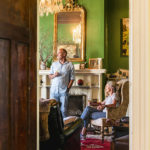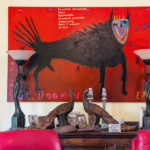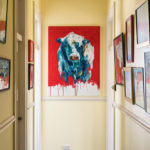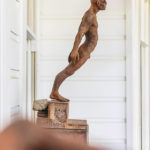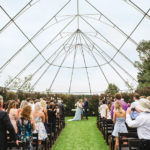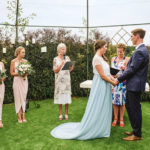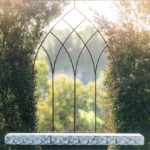Celebrating love in a homegrown church: How Felicity Warren transformed her garden into the Martinborough Tree Church
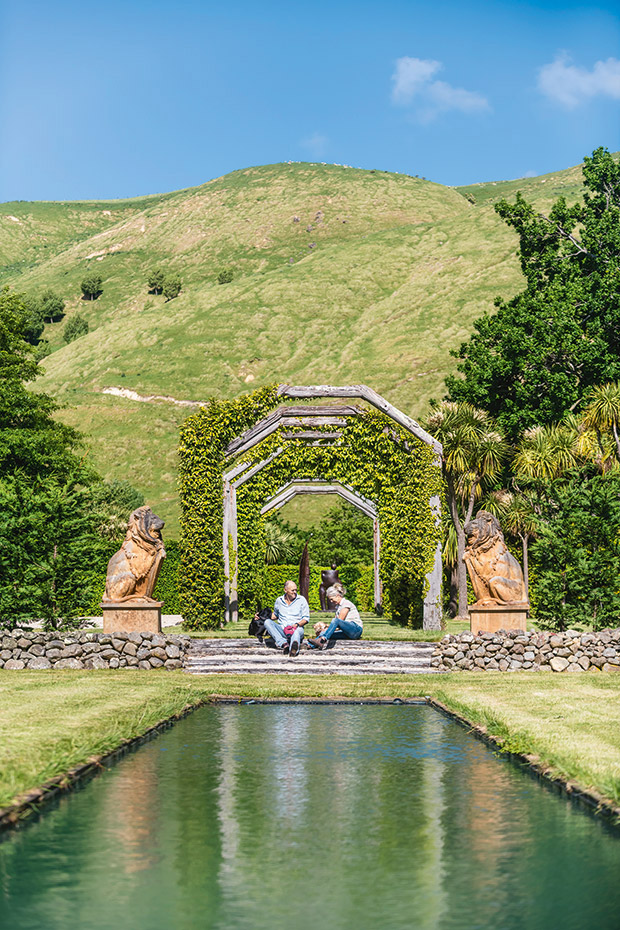
Felicity Warren collected the rocks — from all over the farm — for the stone walls surrounding the garden with a tractor and front bucket. Arthur, in particular, was impressed. “It is amazing what you’ve achieved,” he told her.
A creative woman on a beautiful farm branched out beyond her flower-free, well-hedged garden to plant herself a business. It’s growing divinely.
Words: Kate Coughlan Photos: Mike Heydon
When Felicity Warren was at secondary school, she told the career advisor she wanted to help people. The counsellor (obviously quite out of touch with what she herself did for a living) said the teen was foolish. “You won’t get paid to listen to people’s problems, so you’d better come up with something else to do.”
So Felicity did, but not before she had packed her life with experiences such as studying psychology, hitchhiking across two continents and, more extensively, a busy role as a wife and mother (to two sons and a daughter) on a sheep and beef farm in south Wairarapa, which is where she now lives.
When Felicity decides on something, it’ll probably happen, no matter how crazy the concept. Once, as a hitchhiking 20-year-old in South America, she talked her way past the cab-bed of an articulated lorry and its amorous driver eager to have her join him in a snooze, and into the driver’s seat.
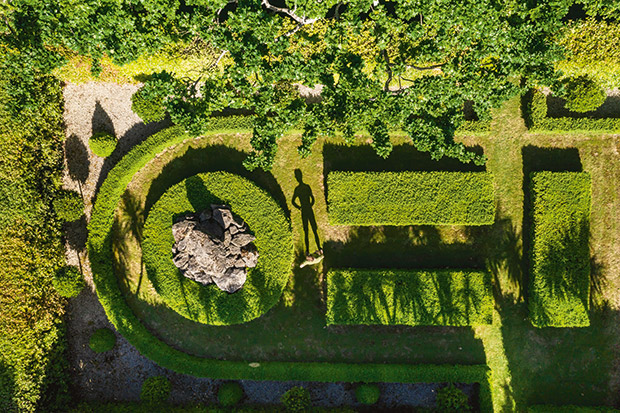
“It’s not that I don’t like flowers,” says Felicity of her flowerless garden. “I’m more of a ‘design it, plant it and move on’ sort of a gardener, and flowers need constant care. They die if I plant them anyway.” She designed the property with the words of an English landscaper uppermost in her mind: “If it doesn’t look good on paper, it won’t feel good to walk around in.”
“Of course, I can drive it,” she assured the creepy Argentine. “Everyone in New Zealand knows how to drive these things. We do it all the time. You sleep, and I’ll drive for a while.”
Yes, she had grown up on a farm in the mid-Canterbury foothills near Mount Somers, but no, she’d never been behind the wheel of anything larger than the farm ute. “Oh, this one’s a bit different to ours at home,” she prattled to the driver in her cheery way, “just show me again how these gears work?”
She got the hang of it and drove the large truck for hundreds of kilometres across the Patagonia region towards distant Buenos Aires. She only woke the driver as the motorway gave way to suburbia and her grasp of the right gears for the repeated stop-goes faltered.
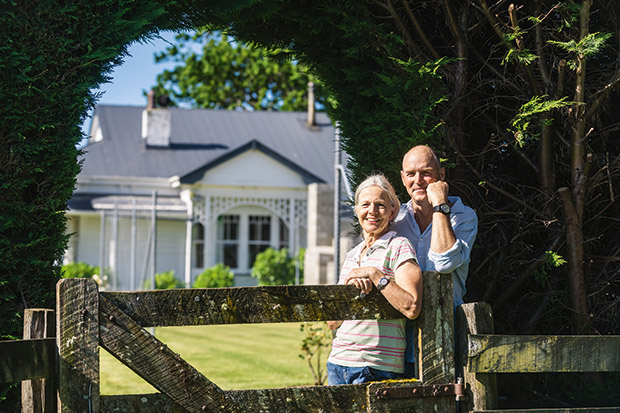
Arthur was able to understand her drawings, having worked in the formal grounds of Knebworth House in Hertfordshire, England, on his OE many years ago. And they were both inspired by a visit to the Canterbury garden created by Felicity’s godfather, John Trengrove, which had encouraged them to be bold but also simple.
In the passenger seat sat her great friend Belles, with whom she had already spent six months traveling around the continent. Belles was not only in awe of Felicity’s ability to master the pantechnicon but grateful to her for out-manoeuvring the sinister driver who was keen for Belles also to join the “nap”.
When they landed in Spain a few months later, the young travelers found Europe a bit tame. “In South America, we were always in danger of being robbed, or having nowhere safe to sleep,” says Felicity. “When we arrived in Europe, it seemed boring. Oh yes, plenty of things to look at but no danger to avoid.”
They had a lovely time, however, once they arrived safely in Austria in their VW van (minus a side mirror that had disappeared within seconds of Felicity taking the wheel and forgetting to stick to the other side of the road). The pair, working at a hotel, were kept busy in turn-about washing linen and taking the hoteliers’ kids skiing for the day.
- The Warrens’ Edwardian era villa on their farm at Ruawaka in South Wairarapa was built in 1911. Farm managers had lived in the house for many years before Felicity and her husband Arthur moved in 29 years ago.
- When Felicity and Arthur moved into this house, the first thing she planned to do was paint out the “awful” green walls of the sitting room. However, before she could get around to it, they began to enjoy the colour. Now they love it. “You wouldn’t think to paint a room this colour but, at night in the winter with the fire going, it creates a wonderful ambience.”
- The painting above the sideboard is by Euan McLeod, bought for its boldness in both colour and risqué text. Felicity noticed the over-sized art deco lamps in the Whale’s Tail in Hastings and had to have them. The peacocks are from Grand Illusions in Greytown.
- The bull painting was found in a woolshed where Amelia Guild, the artist, and another woman had kept a capacity audience in hysterics imitating a myriad of dog breeds. “I loved the strength of the painting and — with the après-buzz of the entertainment — it was my quickest purchase of art ever.”
- This sculpture by artist Max Patté is the original marquette of Patté’s iconic Wellington waterfront piece.
When Felicity returned to New Zealand, she had another go at entering the world of counselling by way of a psychology degree at Victoria University. The possibility of such a degree as the gateway to a counselling career seems to have eluded her school careers’ advisor.
When things are meant to be, they happen, says Felicity, now a registered celebrant who marries and buries people. Her skills for such a career were noted by her eldest son Nicholas when he was seven in a drawing entitled Mummy is the Biggest in our Family and she is Nice to Everyone.
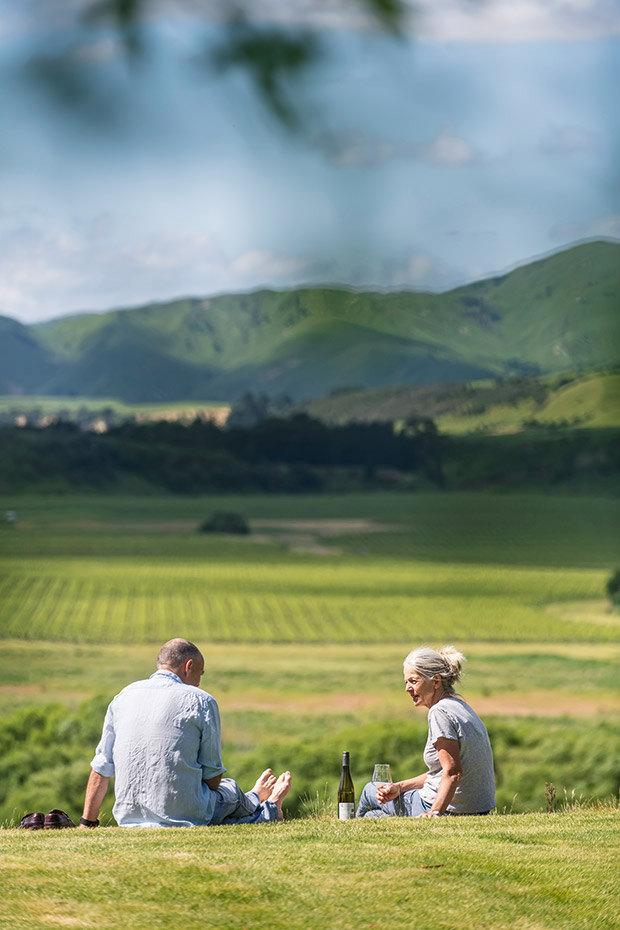
The drawing is hung on a back hall of the family home along with other framed-for-posterity childhood works of art by second son Monte and daughter Dushka, including I Dream of Catching the Sun and My Dreams have Frogs in Them.
While studying for her celebrant licence, she had to prepare an example of a funeral and wrote a service for her sister. The nowhere-near-dead sister Nicky loves it so much, she can’t wait to die. “Oh my God, it’s gorgeous,” she told Felicity. “I’m looking forward to my own funeral.” Except, she would quite like to work out a way of being at it.
Felicity’s energy is boundless, whether it is spent building stone walls (around the property are many metres of Felicity-built stonework high enough to be stock proof), designing major extensions to the family home (completed two decades ago) or dreaming up new schemes for the diversification of farm income. When a friend sent her a photograph of the TreeChurch at Ohaupo near Hamilton, she at first dismissed the idea.
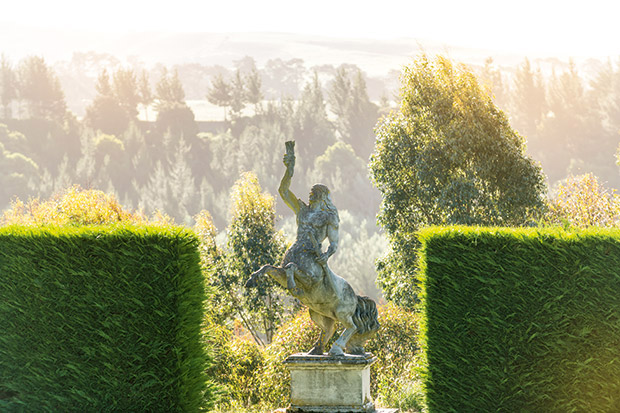
Felicity nearly had conniptions when she looked at photographs from her daughter Dushka’s 21st and realized that at one stage of the celebrations the centaur, originally a polystyrene prop from Xena: Warrior Princess, was host to many climbing partygoers. “Thank goodness, the clever Brett Harman [an engineer from Carterton] had cast it in concrete secured it on a large plinth with that in mind. He suspected curious climbers might be an issue so had used extensive internal steel reinforcing.”
The garden surrounding the Wairarapa farmhouse in which she and Arthur had raised their children (all left home now) was extended to Felicity’s design a few years after her arrival as a young bride. The formal and flowerless layout was inspired by Arthur’s experience gardening at the vast grounds of Knebworth Estate in Hertfordshire, England, and by a visit to John Trengrove (Felicity’s godfather) and his wife Pauline’s garden at Ohoka on the outskirts of Christchurch.
John and Pauline had also developed the famous garden, Ohinetahi, with Sir Miles Warren (who was Pauline’s brother) at Governor’s Bay. At Ruawaka, vistas of green lead to distant hills across valleys of pasture or grapes in three directions. This provided Felicity with many options for a site for a tree church if view was the predominant consideration.
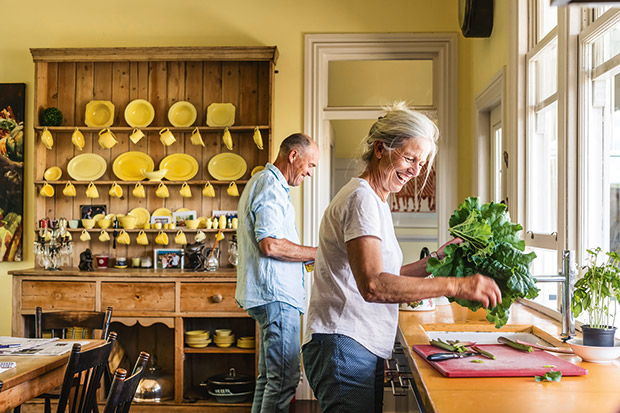
When Felicity designed an extension for the house two decades ago, she wanted to be able to keep an eye on the comings and goings of her then-young children from the kitchen and positioned it in the heart of the house. It has views to the outdoor fireplace and tennis court in the south and the outdoor dining table and swimming pool to the north.
But it wasn’t, shelter was. It can blow in the Wairarapa, boy can it blow. The tree church is now three years old and growing quickly. Felicity chose to use the same plants as the Ohaupo TreeChurch, including australian manuka for the walls and a cut-leaf alder for the roof.
Like many decisions made on farms, Felicity’s choice to grow a church has inter-generational implications. She discussed the project with Monte and his wife Anna, who also live nearby. Anna works in nearby Martinborough and is qualified in hospitality and management. Felicity wanted to make sure the young couple was willing to take over the tree church and its associated business when the time came.
“Farming is getting more difficult, and I thought it would be a great thing for Monte and Anna, but I didn’t want to burden them with it or force them into it.
“I kept asking if they were OK about it until they said, with some exasperation, “Of course, we will want to take it over, just get on with it.” So Felicity did, although when the trees arrived ready for planting, she was laid up in Masterton Hospital with a mysterious virus that affected her liver, leaving Arthur to plant the church alone.
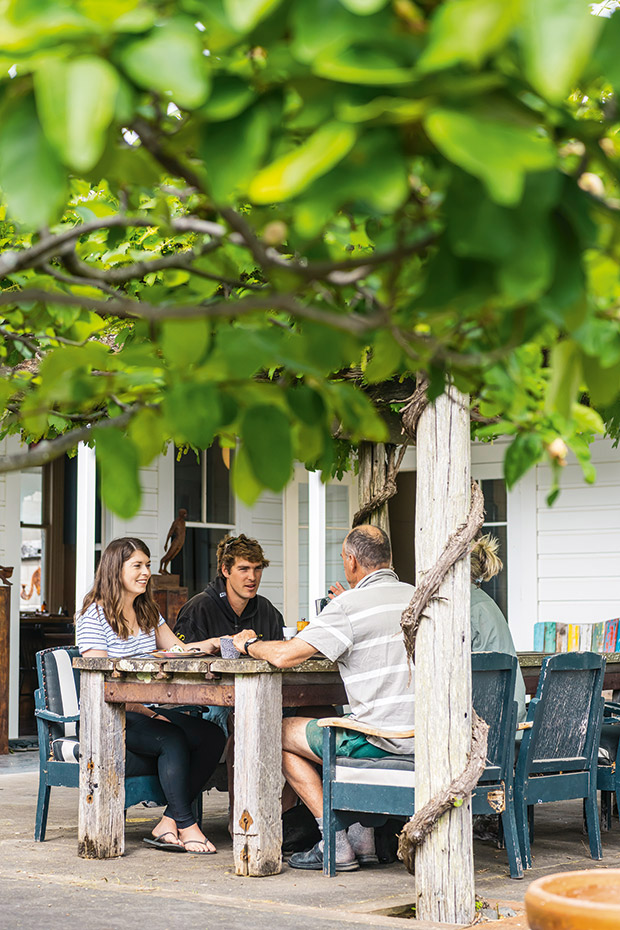
Daughter-in-law Anna and son Monte often pop by for family meals, the two cute guest cottages were originally the blacksmith and postmaster’s cottages at Utuku near Mangaweka, before being transported and refreshed for a new life on the farm at Ruawaka.
“It was the best thing that could have happened,” says Felicity, but not because she avoided the backbreaking planting. “Arthur did it all and he is invested in it and now happily helps with its maintenance.”
The trees are growing nicely, leaping up the wrought-iron structure built by Carterton-based “genius” Brett Harman. The creative craftsman is responsible for many of the feats, including the placement and securing of a huge statue of a centaur that Felicity relocated from Auckland by horse float after a Xena: Warrior Princess props sale.
“The centaur sat on our front verandah for three years with Arthur’s language getting stronger and stronger every time he tripped over it,” says Felicity.
“Finally he said, ‘it has to go”, but as I had no idea what to do with it, I told him to have faith and that something would eventually happen. Which it did; Brett happened along.”
Brett is the key to the church’s beautiful neo-Gothic windows (Felicity’s concept, Brett’s execution) and the altar, which seems to hover above its narrow plinth. Brett is the key to the whole structure – the finely balanced arches above the avenue leading to the reflection pond, the massive urns at the front of the house (so big that Dushka and a friend once had their dinner inside one, climbing in and out by ladder), and the candelabras designed by Felicity. And on it goes.
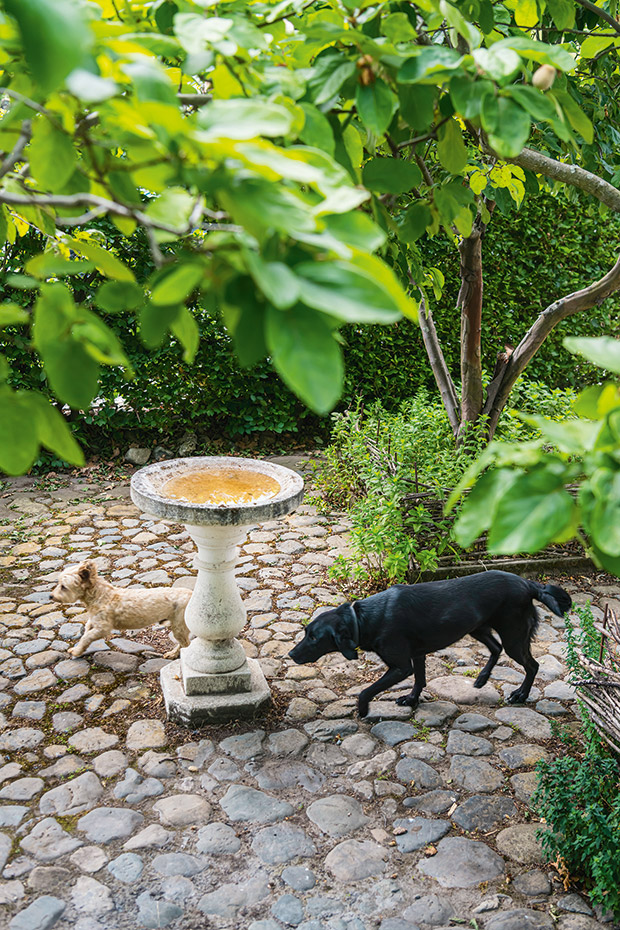
Dudley the dog’s heritage is mixed — he had a maltese/bijon/jack russell mother and an australian terrier father. Aqua, on the other hand, is a more aristocratic breed of springador, a springer spaniel crossed with a labrador. Both love wandering through Felicity’s herb potager, set under quince trees for which she weaves new willow fences every few years.
It has worked out even better than she imagined, and such has been the demand for weddings that the family has decided to relocate an old shearing shed into an old gravel pit on the property as a venue for post-nuptials celebrations. By 2021, couples will be able to exchange vows in the tree church, then wander across the big lawns and down into the former pit and party away in the repurposed woolshed.
Felicity, at the heart of it, loves her role helping people celebrate the best day of their lives, as well as helping others farewell loved ones. As she told the careers’ counsellor – she is happy helping people.
HOW DOES YOUR CHURCH GROW?
In three years, the walls of Felicity’s tree church are complete, and the branches of the roof are reaching heavenward thanks to the iron framework. Skilled craftsman, engineer, welder, artist and creator of anything Felicity dreams up, Brett Harman, made the steel framework in three pieces. Friends, who thought they were invited to a barbecue, were co-opted to lift the structure into place and rewarded with champagne and a barbecue dinner — eventually.
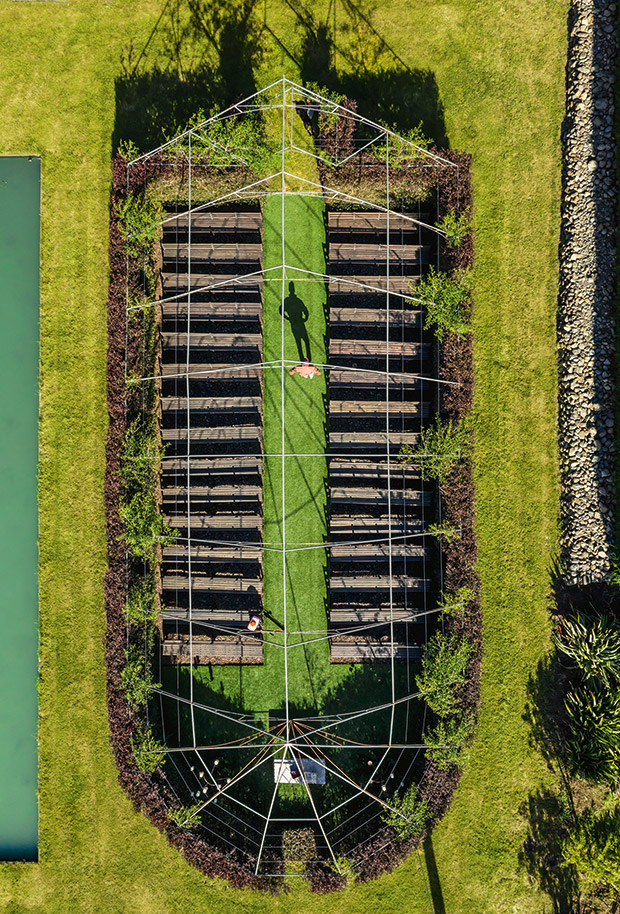
The walls are framed by Leptospermum nitidum ‘Copper Sheen’, an Australian native and member of the manuka family. It is fast-growing, drought-tolerant and easily trimmed, with bronze foliage that is soft to the touch.
The roof is framed by Alnus glutinosa ‘Imperialis’, a cut-leaf alder that is prolific and doesn’t mind being bent. Felicity says she made her church on the generous side. It seats a maximum of 210 (if seven cosy up on each pew) or 180 comfortably.
“I’ve learned a lot. It didn’t need to be that big and being wider means the peak of the roof is much more difficult to access for trimming. It has just made more work for me and more trimming for Arthur, who does a beautiful job of it. However, it isn’t something we have done lightly. It is a big commitment.”
THE RIGHT CELEBRANT
Felicity says the key to being a good celebrant, either at wedding or funeral, is to be a good listener. She completed a diploma with the New Zealand Celebrant School and says the course was intensive and gave her the confidence to officiate at diverse celebrations.
“One has to be registered to be the celebrant at a wedding, but since training is not obligatory, there are untrained people out there doing weddings and funerals that are shortchanging their couples,” she says.
- Felicity and Arthur’s son Monte and his wife Anna were among the first to be married by Felicity in the tree church.
- Since then, its roof boughs have headed heavenwards.
- The neo-gothic windows, now surrounded by the feathery fronds of australian manuka, are even more beautiful than Felicity imagined when she decided on their shape.
“The trick is to work out what is important, to be able to help people with suggestions when they are lost and encourage them to come up with their own ideas, so each ceremony is individual. It is such a gorgeous time to be working with couples as they are so in love and, luckily, during their ceremony, my focus on them and the romance of it all means I don’t suffer nerves about the presence of all the guests.
“My mother, Rosemary Grigg, was an assistant Anglican priest, but I am not in the least bit religious. I’m a bit spiritual but not religious.”
Love this story? Subscribe now!
 This article first appeared in NZ Life & Leisure Magazine.
This article first appeared in NZ Life & Leisure Magazine.

